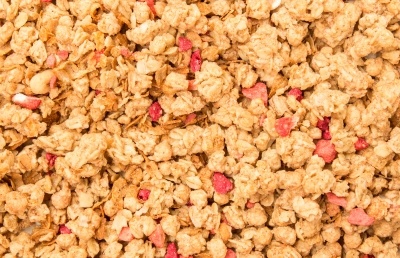
We regularly hear how fibre can help us reduce our weight, stave off type-2 diabetes and help us regulate our cholesterol levels. There is no news here when a recent study demonstrates that regular consumption of cereal fibre can help reduce the risk of heart disease by up to 18% and from cancer by up to 15%.
A recent meta-analysis of 14 prospective population studies reported in the British Journal of Nutrition is adding to the ever growing body of evidence that the risk of mortality (death) can be reduced, not minimised by regular consumption of fibre. In fact, those eating the most cereal fibre had a 19% lower risk of literally all-cause mortality compared with those who had the lowest intake. Interestingly, the research could not identify a threshold level for the protective levels of cereal fibre consumption.
The study quote to note is:-
“Dietary fibre intake has been associated with a lower risk of mortality; however, findings on the association of different sources of dietary fibre with mortality are conflicting,..”
The analysis conducted by the Isfahan University of Medical Sciences in Iran and led by Maryam Hajishafiee assessed data from 840,000 cardiovascular disease participants, 370,000 cancer patients and 380,000 subjects in trials examining all the causes of death.
The key studies of interest included a, 11-year study showing dietary fibre benefitted diabetes with cereal fibre being the most effective. Likewise, a Boston based survey over nine years which claimed that a higher intake of cereal fibre could improve the longer-term survival rates following a severe cardiac arrest.
Mind you, not all cereal fibres are equal when it comes to their effectiveness and the protection that is afforded. Also, the mechanisms for fibre’s benefits are still trying to be worked out. The study though did identify a lower potential for cancer causing agents (carcinogens) interacting with the colon and reduced faecal transit time. Likewise, fibres contain antioxidants, phenolic acids and polyphenols, folate, various lignans etc. which all have a part to play in protection.
The researchers also identified a reduction in inflammation as a possible change in mechanisms leading to reduced mortality. Two of the markers for inflammation such as C-reactive protein and tumour necrosis factor alpha (TNF-α) receptor 2. These inflammation markers are associated with many of the health issues already mentioned and they are lowered when cereal fibre is consumed.
How much to eat though ? It’s certain there is no threshold level but the more you eat the less likelihood of risk of death in simple terms. The report stated:-
“As the range of intakes appeared to vary considerably between the included studies, with the highest values in some studies being below the lowest values in other studies, current limited data did not allow us to determine a certain value to be recommended.”
Hajishafiee, M., et al., (2016) Cereal fibre intake and risk of mortality from all causes, CVD, cancer and inflammatory disease: a systematic review and meta-analysis of prospective cohort studies. 116 pp. 343-352 doi: 10.1017/S0007114516001938


Leave a Reply